Description
This finely crafted pair of sugar castors reflects the sophistication of Dutch silverwork in the 18th century in The Hague. Each castor stands on a stepped octagonal foot and transitions upward through a baluster-shaped lower body, sharply faceted mid-section and shoulders, and culminates in a pierced domed cover with classical finial. The pierced covers are decorated with stylized scrolls and floral motifs, offering both elegant ornamentation and functional refinement for dispersing sugar.
Albert de Thomése I was an eminent silversmith known for his precise geometric forms and distinguished decorative technique. The bold architectural shaping of these castors—combining faceted bodies with ornamental openwork—demonstrates his mastery of both form and function. Such sets were highly prized as part of the formal tea or dessert service in elite Dutch households..



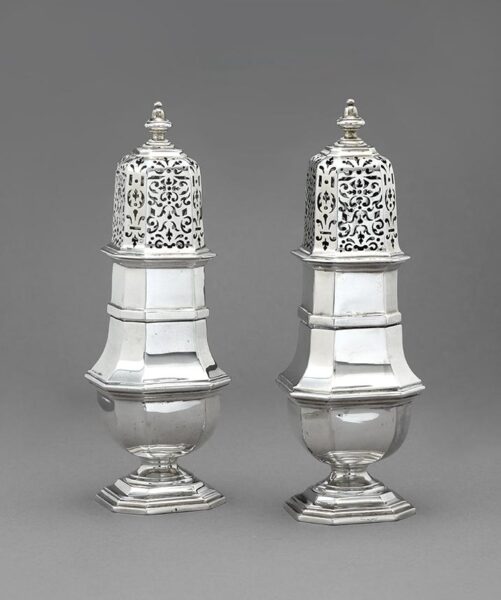
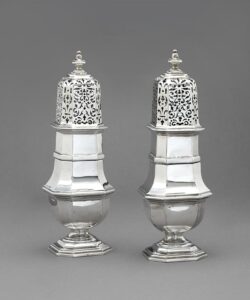
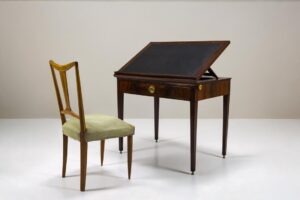
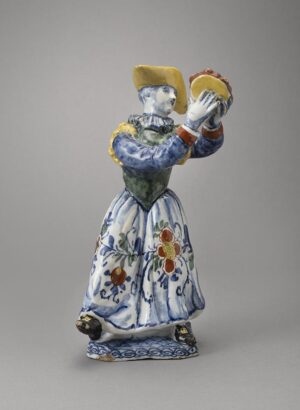
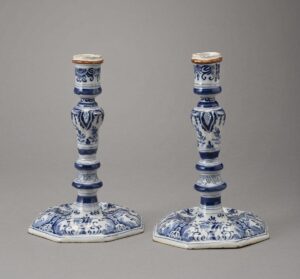
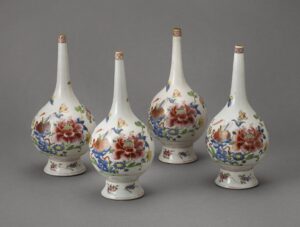
Reviews
There are no reviews yet.